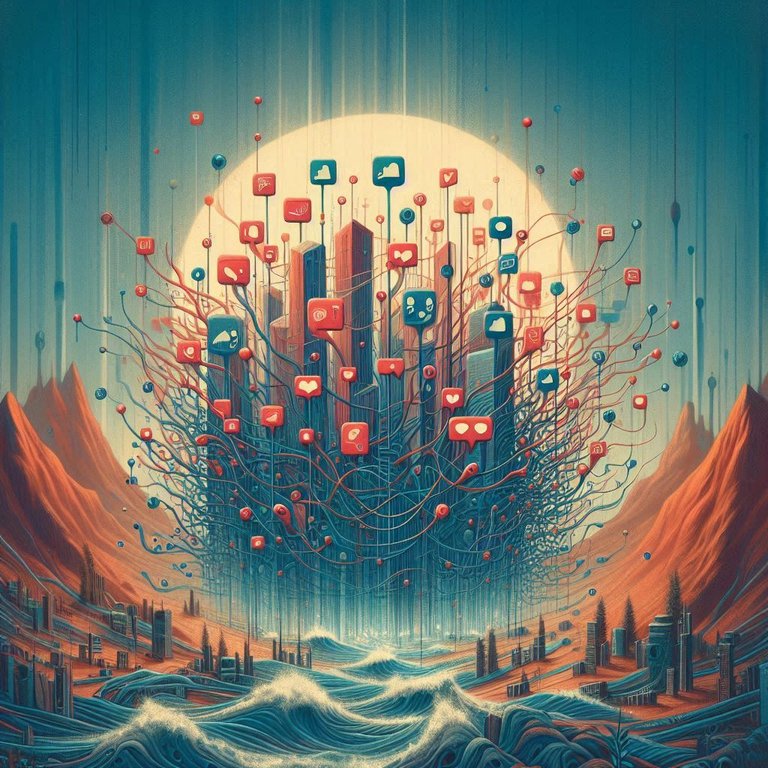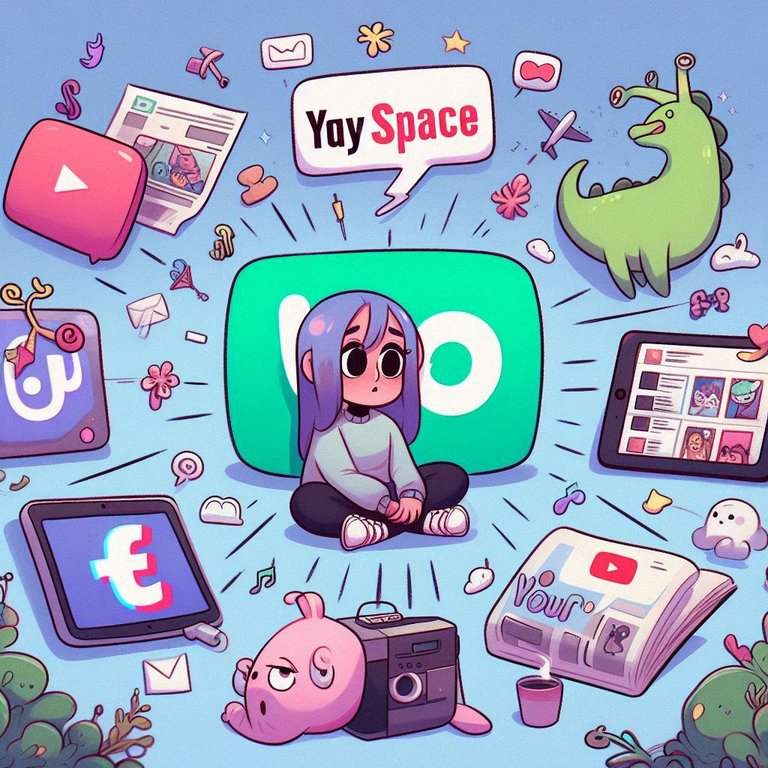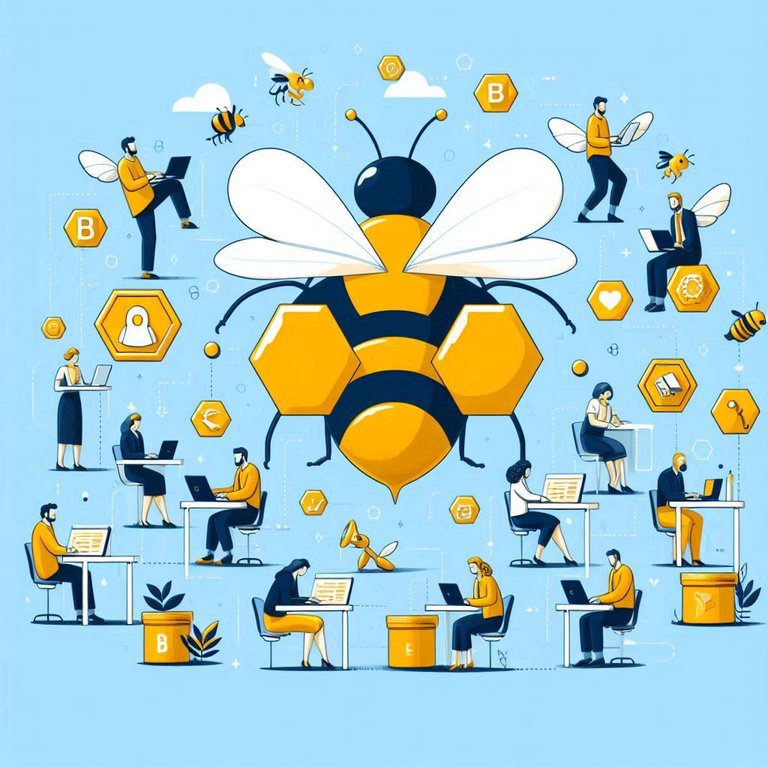How a Social Network Dies, How Hive Can Avoid It [ENG/ESP]
Puedes leerlo aquí, o simplemente desplázate hacia abajo en la página.
I certainly remember the time when social networks were incipient and especially aimed at a very specific audience, even for a while interested in technology and with some technical knowledge. Over the past 15 years, we have undoubtedly seen and experienced firsthand the vertiginous rise of social networks and their integration into our daily lives.

However, not all social networks have evolved in the same way or have endured. Many social networks, for various reasons, "died" along the way, some leaving users practically stranded and others abandoned little by little by their own users until they disappeared. But we could find a concrete list of reasons behind the disappearance of social networks, and if so, Hive from a social perspective could avoid these mistakes and learn from past experiences to not repeat the mistakes of others.
Let's do a brief analysis through the most well-known examples.
Not so Social
Perhaps MySpace was the first social network to reach wide popularity and a loyal audience. With its great level of profile customization and the feeling of being close to friends and celebrities in one place, it had a sad end mostly due to the growing relevance and innovation that its main competitor, Facebook, quickly began to implement. Facebook, despite the apparent lack of customization compared to MySpace and its coldness, outdid it by presenting a closer and more connected world, with an experience focused on immediacy and effective communication between users.
Google+, we all remember it because we were practically forced to have an account on this platform. Google tried with all its might to enter the social network market, but its proposal lacked any appeal and, combined with major security flaws, did not achieve a large number of active users.
Jumping to video platforms, today we all know TikTok or the reels and Shorts on Instagram and YouTube, respectively. But a few years earlier, Vine existed, a short video platform that had a great explosion of popularity, especially among young people. The emergence and adoption of the short vertical video format by more popular social networks with an already large audience ended up displacing Vine.
Other platforms like Orkut, very popular in India and Brazil, DeviantArt, focused on artists, and Tumblr with its customization and closeness, fell by the wayside despite having a large audience, due to the lack of innovation and adaptation to new technologies and trends.
The Reasons

With all this on the table, we can list some common reasons that are quite interesting.
- Lack of Innovation: Undoubtedly, this is the common factor. Platforms that do not evolve and adapt to the needs of users and trends end up being forgotten.
- Competition: The tech world is competitive, especially in the social network market, and much of this competition can be quite tough.
- Security: Most users are concerned about the security of their data, so security issues can lead to a loss of trust and erosion in the user base.
- Unsustainable Businesses: The lack of a business strategy and monetization for both the network and users can lead to a loss of interest or turn projects into unsustainable ventures, leading to closure.
And Hive?
For now, Hive seems to avoid many of these problems due to its origin and trajectory, though it suffers from others on a larger scale. The decentralized structure ensures that freedom of expression and participation is favored without strict control imposing limits or censorship. However, it has managed to create a base of responsible and committed users.

Despite the fact that Hive promotes innovation and has seen great advances, maintaining a dynamic of greater dynamism and immediacy for the end user is extremely necessary. New dApps and features are needed to attract new users and maintain the interest of the old ones, but without sacrificing the essence it has managed to obtain.
Hive's strong point is the reward system for both creators and curators, an incentive more than enough to maintain interest and active participation. However, it is not being effective enough, as sometimes it leaves the social factor somewhat behind.
Lastly, I would like to add that prioritizing the transparency and security of the entire ecosystem is a necessity. Beyond the immutable record, projects and witnesses need to provide a certain level of communication with users. I have spent little time on Hive, but I think I have learned a lot and found many users willing to explain. However, to some extent, there is a barrier of ignorance that can drive new users away.
I sincerely want to thank you for taking the time to read this article. Your support means a lot to me and motivates me to continue sharing content that can be useful and interesting for you. If you found this article helpful or enjoyed reading it, I would greatly appreciate your feedback. Best wishes.

Cómo muere una red social, cómo Hive puede evitarlo
Sin duda recuerdo la época en que las redes sociales eran incipientes y sobre todo destinadas a un público muy concreto, incluso hasta cierto tiempo interesado en la tecnología y con cierto conocimiento técnico. A lo largo de estos últimos 15 años, sin duda hemos visto y vivido de cerca un vertiginoso avance de las redes sociales y la integración de estas a nuestra vida diaria.

Sin embargo, no todas las redes sociales han evolucionado de la misma forma o han perdurado. Muchas redes sociales, por varias razones, "murieron" en el camino, algunas dejando a los usuarios prácticamente colgados en la nada y otras abandonadas poco a poco por los propios usuarios hasta desaparecer. Pero podríamos encontrar una lista concreta de razones detrás de la desaparición de las redes sociales y si es así, Hive desde el punto de vista social podrá evitar estos errores y aprender de las experiencias pasadas para no repetir los errores de otros.
Hagamos un pequeño análisis a través de los ejemplos más conocidos.
No tan Social
Quizás MySpace fue la primera red social en alcanzar una popularidad amplia y un público fiel. Con su gran nivel de personalización para los perfiles y la sensación de estar cerca de amigos y famosos en un solo lugar, tuvo un triste final en su mayoría debido a la creciente relevancia e innovación que su principal competencia, Facebook, comenzó a implementar rápidamente. Facebook, a pesar de la aparente falta de personalización en comparación con MySpace y su frialdad, le ganaba en mostrar un mundo más cercano y conectado, con una experiencia enfocada en la inmediatez y la comunicación efectiva entre usuarios.
Google+, todos la recordamos porque prácticamente se nos obligó a tener una cuenta en esta plataforma. Google intentó con todas sus fuerzas entrar en el mercado de las redes sociales, pero su propuesta carecía de cualquier atractivo y, unido a grandes fallas de seguridad, no alcanzó un gran número de usuarios activos.
Saltando a las plataformas de videos, hoy en día todos conocemos TikTok o los reels y Shorts tanto en Instagram como en Youtube respectivamente. Pero unos años antes existió Vine, plataforma de videos cortos que tuvo una gran explosión de popularidad, sobre todo entre los jóvenes. El surgimiento y adopción del formato de videos cortos en vertical por redes sociales más populares, con ya un gran público ganado, terminó desplazando a Vine.
Otras plataformas como Orkut, muy popular en India y Brasil, o DeviantArt, enfocada en artistas, y Tumblr con su personalización y cercanía, quedaron en el camino a pesar de tener un gran público, debido a la falta de innovación y adaptación a las nuevas tecnologías y tendencias.
Las Razones

Con todo esto sobre la mesa, podemos enumerar algunas razones en común que son bastante interesantes.
- Falta de innovación: Sin duda este es el factor común, las plataformas que no evolucionan y se adaptan a las necesidades de los usuarios y tendencias terminan quedándose en el olvido.
- Competencia: El mundo de la tecnología es competitivo, sobre todo en el mercado de las redes sociales, y mucha de esta competencia puede ser bastante dura.
- Seguridad: A la mayoría de los usuarios les preocupa la seguridad de sus datos, así que los problemas de seguridad pueden hacer que falle la confianza y genere erosión en la base de usuarios.
- Negocios Insostenibles: La falta de una estrategia de negocio y monetización tanto para la red como para los usuarios puede hacer que se pierda el interés o se convierta en proyectos insostenibles, llevando al cierre.
¿Y Hive?
Por el momento, Hive parece que debido a su propio origen y trayectoria se zafa de muchos de estos problemas, aunque padece de otros a mayor escala. La estructura descentralizada asegura que se favorezca la libertad de expresión y participación, sin un control estricto que imponga límites o censuras. Sin embargo, ha logrado crear una base de usuarios responsables y comprometidos.

A pesar de que en Hive se promueve la innovación y se han visto grandes avances, mantener una dinámica de mayor dinamismo e inmediatez en el usuario final es extremadamente necesario. Se necesitan nuevas dApps y nuevas funciones que atraigan a nuevos usuarios y mantengan el interés de los antiguos, pero sin sacrificar la esencia que ha logrado obtener.
El gran punto fuerte de Hive es el sistema de recompensas tanto para creadores como para curadores, un incentivo más que suficiente para mantener el interés y una participación activa. Sin embargo, no está siendo lo suficientemente efectivo, porque en ocasiones deja atrás un poco el factor social.
Y por último, me gustaría agregar que priorizar la transparencia y seguridad de todo el ecosistema es una necesidad. Más allá del registro inmutable, proyectos y testigos tienen que brindar cierto nivel de comunicación con los usuarios. Llevo poco tiempo en Hive, pero creo que he aprendido bastante y encontrado muchos usuarios dispuestos a explicar. Sin embargo, hasta cierto punto existe una barrera de desconocimiento que puede alejar a nuevos usuarios.
Quiero agradecerles sinceramente por tomarse el tiempo de leer este artículo. Su apoyo significa mucho para mí y me motiva a seguir compartiendo contenido que pueda ser útil e interesante para ustedes. Si encontraron este artículo útil o disfrutaron leyéndolo, les agradecería enormemente sus comentarios. Éxitos.

| I’m Ernesto, a Cuban passionate about art and writing. Always learning, always growing. Excited to share and learn more every day! I write about art, drawing, video games, nature, and review the things I like. My goal is to inspire and connect with others through my creative journey. |
|---|
Translated with DeepL.com (free version)
I apologize if there are any grammatical errors, English is not my native language, I have tried to be as careful as possible.
I regularly create images on Pixabay, which are free of copyright. Access my gallery by clicking here.
All assets, illustrations and banners have been created by me and are original content, unless otherwise specified.
The images used to illustrate this article were generated with the help of Copilot and are for illustrative purposes only.
Posted Using INLEO
Creo que se te olvida grandes cosas que te ha faltado el beso de la muerte y este es el de los comerciales. Redes sociales como Hi5 han tenido demasiados banners y comerciales que han matado la experiencia de usuarios. Es como ahora vemos algunos sitios como Medium donde te bloquea la busqueda por que te ponen un muro de pago.
Lo otro es el spam y tener bots controlando la red. Enviando 100 mensajes vendiendote pastillas para disfuncion erectil y otras cosas que no tiene nada que ver con la interaccion con otras personas.
Definitivamente, si ago odio es los muros de pago por leer/ver contenido, creo que se pudiera escribir bastante solo sobre ese tema, el spam que mas me molesta en cambio es el de X(Twitter) con los perfiles de OF, hahaha son muy muy molestos.
Congratulations @soyernesto! You have completed the following achievement on the Hive blockchain And have been rewarded with New badge(s)
Your next target is to reach 10000 upvotes.
You can view your badges on your board and compare yourself to others in the Ranking
If you no longer want to receive notifications, reply to this comment with the word
STOP